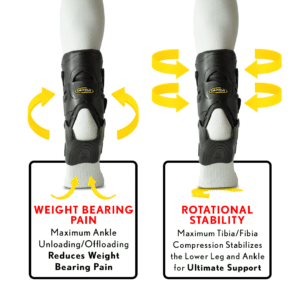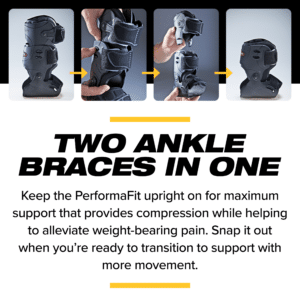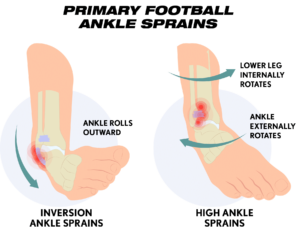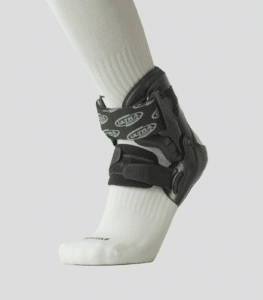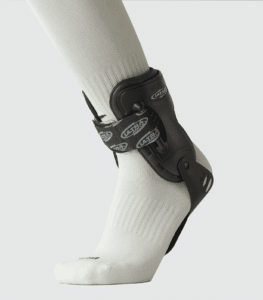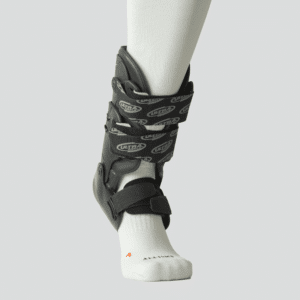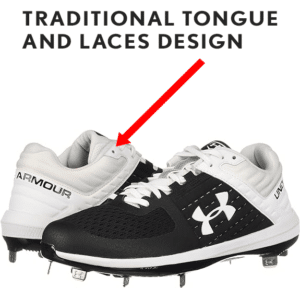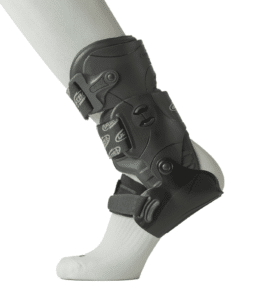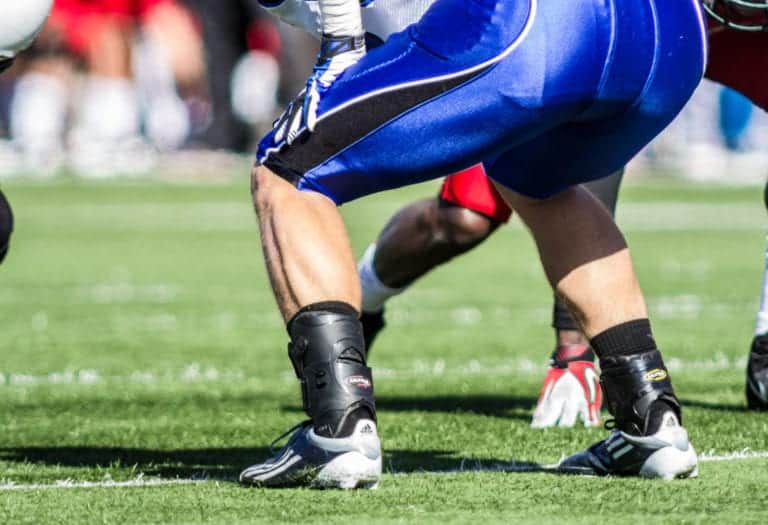Why Ankle Braces Do Not Weaken the Ankle Joint: Debunking the Myth with Ultra Ankle
Introduction – In the early 1990s, ankle braces began appearing more often in sports due to their improved designs and cost efficiency. As time has gone on, ankle braces have been a topic of debate among athletes, coaches, and medical professionals. In this debate, one common myth persists and that myth is wearing ankle braces can weaken the ankle joint, leading to dependency and muscle atrophy. This blog post aims to debunk this myth and highlight the benefits of using ankle braces, specifically those from Ultra Ankle®.
Common Belief About Ankle Braces Weakening the Ankle Joint – Many people believe that using ankle braces can lead to weakened muscles and dependency on the product. The concern is that ankle braces restrict movement, causing the muscles to become less active and eventually atrophy. However, this belief is not supported by scientific evidence. Jan Golden, DPM, wrote in a PPMA blog post “I tell parents that research has shown that there is no evidence that taping or bracing the previously injured ankle joint will make it wear or cause any other injuries above the ankle joint.” Additionally, Dr. Phil Page, Ph.D, PT, ATC, CSCS, FACSM wrote in Training & Conditioning “There is a misconception that if you wear a brace you don’t need to use the ankle as much, so people come to the conclusion without evidence that they will lose the strength; however, no studies have proven this.”
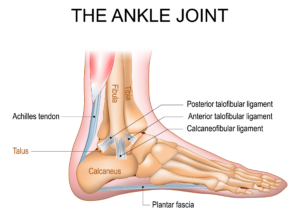
How Traditional Ankle Braces Function – Bones, muscles and a network of ligaments and tendons form internal supports that keep your ankle stable, flexible and strong. These internal supports maintain your ankle’s stability. However, once you’ve incurred an ankle injury the ligaments and tendons are stretched and loosened. Once stretched your ligaments and tendons do not return to their natural state. Traditional or “lace-up” ankle braces, like our Ultra 360®, are designed to do two things. The first is to provide external support and limit certain motions, such as plantar flexion/inversion, which is the movement at the ankle joint that points the foot downward away from the leg and turns the foot inward (MCHS). This helps to provide additional support to your ankle and to aid in preventing ankle injuries. The second is to provide external support after an ankle injury to aid in quicker recovery and to help prevent further ankle injuries. The only problem with traditional lace-up ankle braces is that because they restrict some movements of the ankle joint they can lead to diminished performance with regard to agility and vertical (HKJ). Lastly, once you’ve had an ankle injury lace-up ankle braces do not significantly protect against additional injury. In a study obtained from PubMed, if a (volleyball) player had a history of a previous ankle sprain, the brace did not protect the ankle from another injury. Hinged ankle braces, like our Ultra Zoom®, have the same primary functions as the lace-up ankle brace, to help prevent ankle injuries and to help in recovery from ankle injuries. However, hinged ankle braces allow your ankle to maintain it’s natural plantar flexion and dorsiflexion while restricting the excessive inversion/eversion or “rolling” of the ankle. Additionally, the Ultra Zoom has a hinged-cuff design which also helps to prevent high ankle sprains. Hinged or “semi-rigid” ankle braces have proven to restrict excessive ankle inversion and reduced injury incidences in those with previous ankle injuries (NIH).
Benefits of Ultra Ankle Braces – Ultra Ankle offers a range of high-quality ankle braces that provide excellent support and protection without weakening the ankle joint. Which ankle brace is best for you depends on a few different factors. What is your ankle injury history? Are you looking for a brace to help prevent that initial ankle injury? Or, are you looking for a brace to help recover from recurrent ankle injuries during sports or activities? Ultra Ankle offers 4 advanced ankle braces designed to help prevent, treat, and recover from ankle injuries:
- Ultra 360®: The Ultra 360 locks your ankle in place while the figure-8 straps provide 360º of ankle support to help prevent excessive ankle rolling. The multi-adjustable design allows you to customize your level of support. Click HERE to learn more about the Ultra 360 product features.
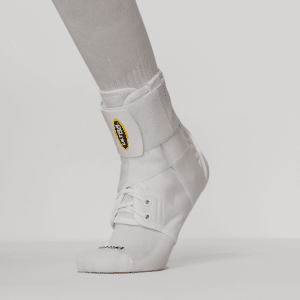
- Ultra Zoom®:The only ankle brace built for performance— you’ll play better and play more, losing less time to injuries with the Ultra Zoom. The Performathane® soft shell forms to you, allowing your ankle to move in all the natural ways while helping to prevent any excessive movement that may cause an injury. The Ultra Zoom is on your ankle in seconds, protects continuously for hours and lasts for multiple seasons. Click HERE to learn more about the Ultra Zoom product features.

- Ultra High-5®: The Ultra High-5 is a high-support brace designed for chronic ankle instability. Reinforce unstable ankles with the Ultra High-5. Feather-light but super-strong this ankle brace handles the twists and turns even the toughest terrain throws at you. Click HERE to learn more about the Ultra High-5 product features.
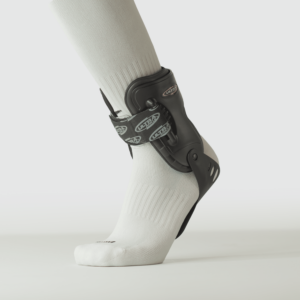
- Ultra CTS®: The Ultra CTS is a FDA registered product designed to treat high ankle injuries, acute ankle injuries, and ankle osteoarthritis. The Ultra CTS is total ankle injury management. It not only helps to relieve weight-bearing pain but also provides maximum lower leg and ankle stability with its patented Performathane upright. Click HERE to learn more about the Ultra CTS product features.
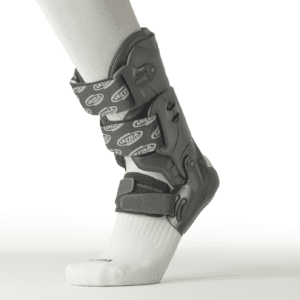
Safe Usage of Ankle Braces – To maximize the benefits of ankle braces, it’s crucial to use them correctly:
- Proper Fit: Ensure the brace fits well to avoid pressure points and restricted blood flow. The Ultra Zoom, Ultra High-5, and Ultra CTS ankle braces can be easily tailored to fit your feet and ankles by using a home hair dryer. Watch our Ultra Ankle Custom Heating Video to learn how this process works. Keep in mind, like a new pair of shoes, all ankle braces require a break-in period.
- Proper Shoes: Not all shoes are compatible with every ankle brace. To see which types of shoes to wear with Ultra Ankle braces, watch our Ultra Ankle Recommended Shoe Video.
- Strengthening Exercises: Combine ankle strengthening exercises with the use of an ankle brace to maintain overall joint health.
Conclusion – The myth that ankle braces weaken the ankle joint is not supported by scientific evidence. Ankle braces, such as the Ultra 360, Ultra Zoom, Ultra High-5, and Ultra CTS from Ultra Ankle, provide essential support and injury prevention without compromising muscle strength. The Ultra Zoom, Ultra High-5 and Ultra CTS have also proven to help athletes and individuals recover from ankle injuries faster, allowing them to get back to their sport and/or daily lives more rapidly. By using these braces correctly, athletes and individuals can enjoy enhanced stability and protection, leading to safer participation in sports and daily activities.
